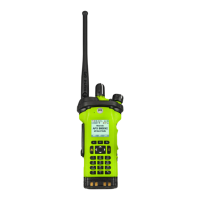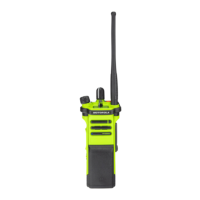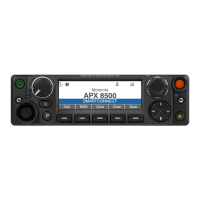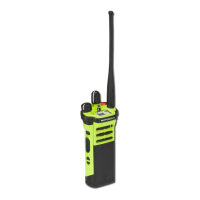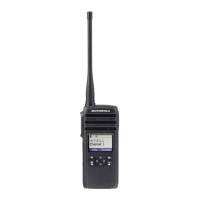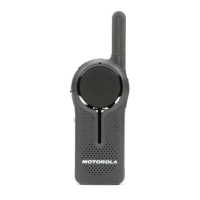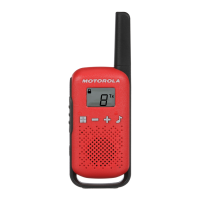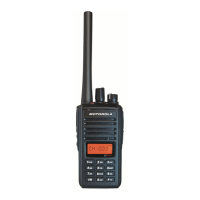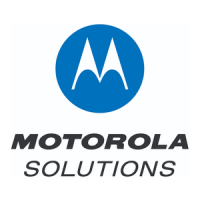
Do you have a question about the Motorola solutions APX 8000 and is the answer not in the manual?
| Brand | Motorola solutions |
|---|---|
| Model | APX 8000 |
| Category | Two-Way Radio |
| Language | English |
Explains symbols like Warning, Caution, and Notice for safety hazards.
Provides guidance on proper usage and care for radio longevity and efficiency.
Details Motorola Solutions' participation in battery collection and recycling programs.
Lists information available from dealers or administrators regarding radio settings and features.
Instructions for charging the radio's battery to ensure optimal capacity and performance.
Procedure for attaching and removing the battery from the radio unit.
Steps for correctly attaching the antenna to the radio receptacle.
Guides on shielding the accessory connector when not in use to prevent damage.
Instructions on how to properly position and secure the radio within its carry holder.
Details the process of powering on the radio using the control knob.
Explains how to increase or decrease the radio's audio volume using the control knob.
Identifies and describes the various buttons, knobs, and indicators on the radio.
Explains how programmable buttons can be configured for radio functions and channels.
Describes how the radio indicates battery status via LED, sounds, and icons.
Details the meaning of different LED colors and patterns indicating radio status.
Explains the various icons displayed on the LCD indicating radio operating conditions.
Describes icons related to Text Messaging Service (TMS) for sending/receiving messages.
Illustrates icons that appear on the display for different types of incoming or outgoing calls.
Explains how backlight and color bars change to signal radio events.
Lists alert tones and the conditions under which they occur to inform the user.
Describes visual displays and audio alerts for phone calls made or received.
Explains how channel identification is enhanced by changing display backlight and color.
Provides methods to select a zone, which is a group of radio channels.
Explains how to select a radio channel based on its characteristics.
Allows saving current zone and channel to programmable buttons or softkeys.
Details how to receive and respond to different types of radio calls based on system indicators.
Outlines ways to select a zone, channel, subscriber ID, or talkgroup to initiate a call.
Explains toggling between repeater and direct operation modes for coverage.
Ensures a channel is clear before transmitting by monitoring for audio or data.
Optimizes handling of message sizes and variable update rates for data channel efficiency.
Ensures seamless switching to a backup site during system failures for continuous communication.
Prevents crosstalk scenarios and adjusts internal clock rates to reduce RF interference.
Provides security encryption and authentication for Integrated Voice and Data services.
Allows secured communications on Analog or Motorola Data Communication channels.
Enables remote reprogramming of encryption keys in the radio by the dispatcher.
Provides low-cost portable radio coverage in areas where only mobile radio coverage is available.
Improves scan feature operation for multiple agencies using a single conventional channel.
A virtual assistant for managing the radio and performing lookups using voice commands.
Explains operations of various call features like selective and talkgroup calls.
Allows administrators to turn on a targeted radio's microphone for remote monitoring.
Provides "address-book" capabilities for initiating calls with stored aliases and IDs.
Describes how scan lists are created and assigned for voice activity monitoring.
Allows monitoring traffic on different channels by scanning a programmed list.
Enables the radio to function as a pager to send individual call alerts.
Allows viewing of recent incoming and outgoing call information.
Mutes affiliated talkgroup/dispatch calls while retaining radio contact.
Provides critical situation indication and overrides other communications on the selected channel.
Details the portable Fireground Communications System for incident scene deployment.
Enables an evacuation tone to be heard on transmitting and receiving radios.
Identifies transmission start/end by displaying caller name or ID.
A safety feature that activates an emergency alarm or call based on radio position or motion.
Provides automated data application registration for the radio upon power-on.
Allows sending and receiving messages and running database queries directly from radios.
Enables sending/receiving messages and running database queries with two-factor authentication.
Provides high-level voice security on trunked and conventional channels.
Allows administrators to put a radio into a nonfunctional state when missing.
Integrates GPS and GLONASS to determine the radio's geographical location.
Uses GPS to define a virtual perimeter to evaluate radio location in real-time.
Explains trunking system control features like failsoft and site trunking.
Extends radio functionality by connecting to Motorola Solutions proprietary accessories.
States that information is believed reliable but assumes no responsibility for inaccuracies.
Declares the product conforms to FCC regulations as a Class B Digital Device.
Provides RF energy exposure and product safety guidelines for portable two-way radios.
Outlines FCC rules regarding interference and modifications for device operation.
Details FCC rules for operation and licensing requirements for radio transmission.
Explains the process and requirements for obtaining a Canadian radio license.
Covers specific channel assignments like Emergency and Non-Commercial Call channels.
Outlines Federal Communications Commission (FCC) Rule Part 80 requirements for shipboard radios.
States compliance with modulation standards for maritime distress and safety frequencies.
Lists technical specifications for connecting external data sources via RS232, USB, and SB9600.
Details warranty coverage and duration for Motorola Solutions manufactured communication products.
Provides extended hardware repair coverage for accidental damage, including fire and liquid.
Sets forth the full extent of responsibilities, exclusive remedies, and limitations of warranties.
Addresses limitations on incidental/consequential damages and implied warranty duration based on state law.
Guides on the process for obtaining warranty service, including proof of purchase.
Lists exclusions from warranty coverage, such as misuse, accidents, and unauthorized modifications.
Outlines Motorola Solutions' defense against patent infringement claims and exclusive rights for software.
States that the warranty is governed by the laws of the State of Illinois, U.S.A.
Specifies warranty provisions applicable to consumers in Australia under the Australian Consumer Law.
